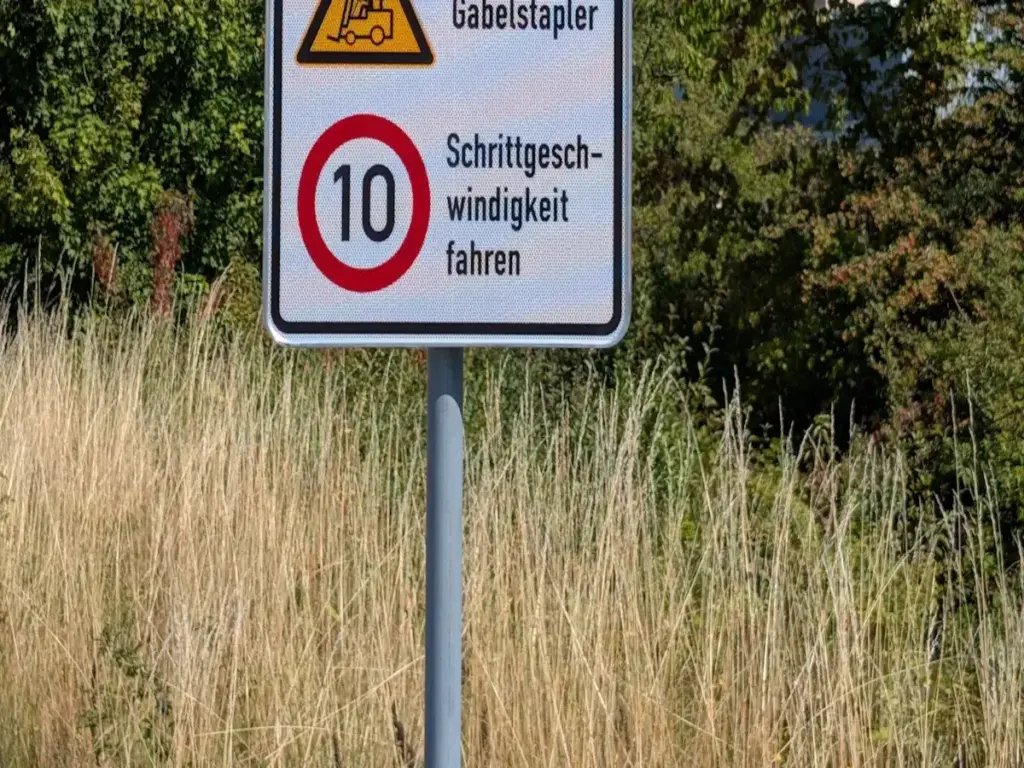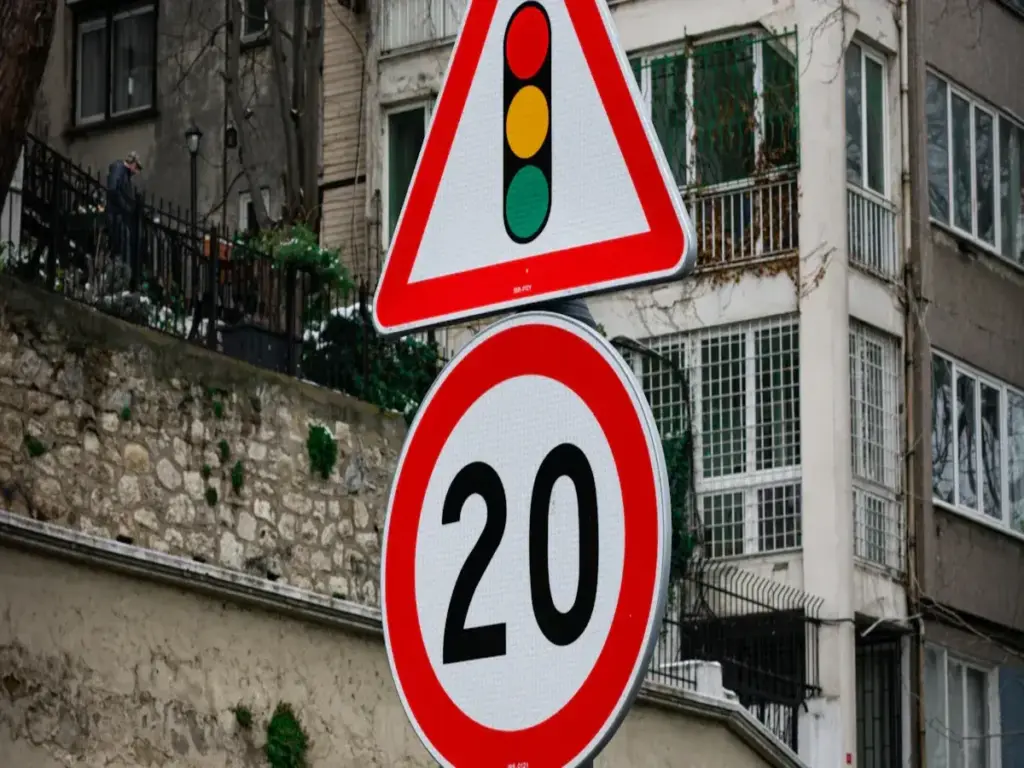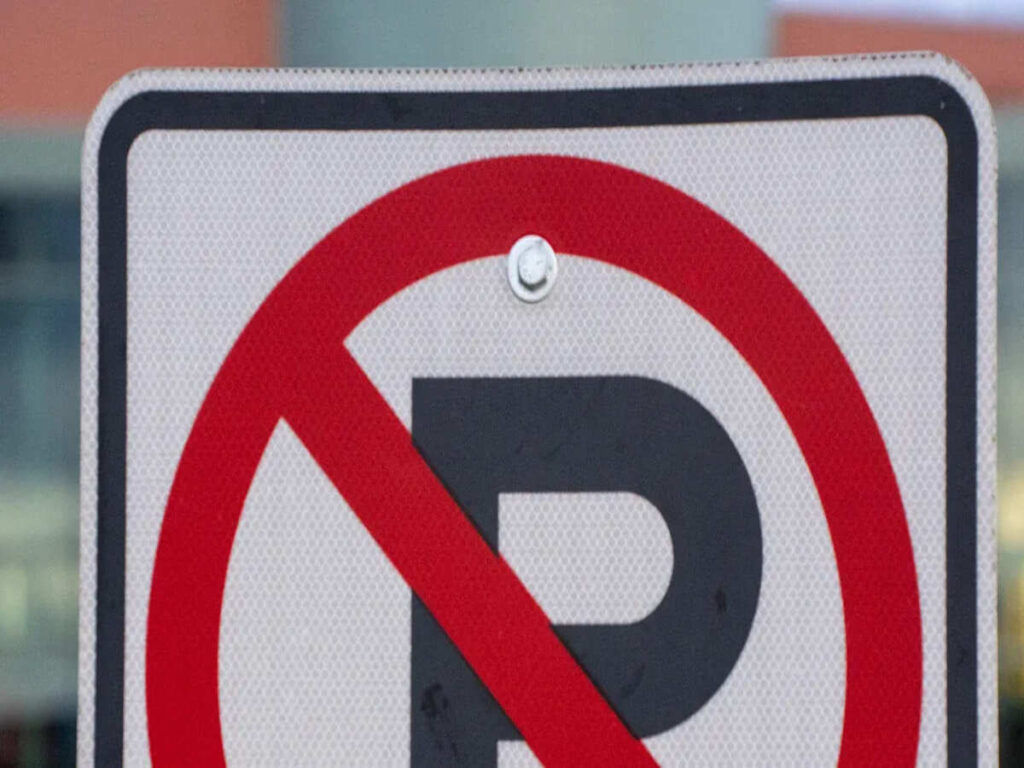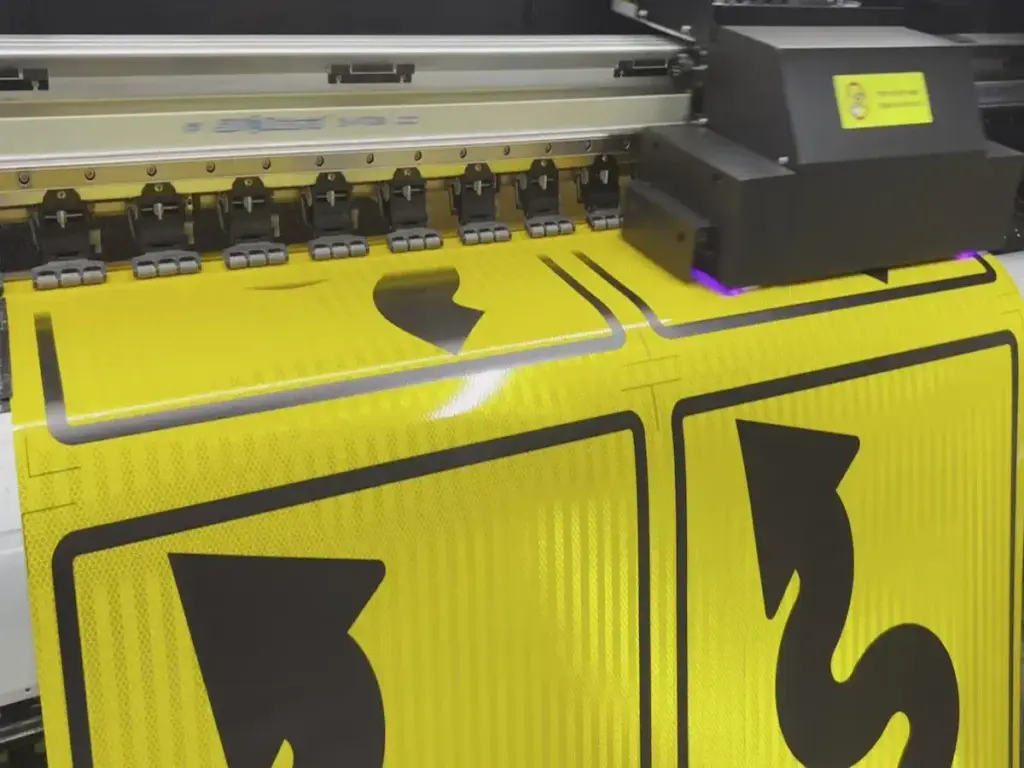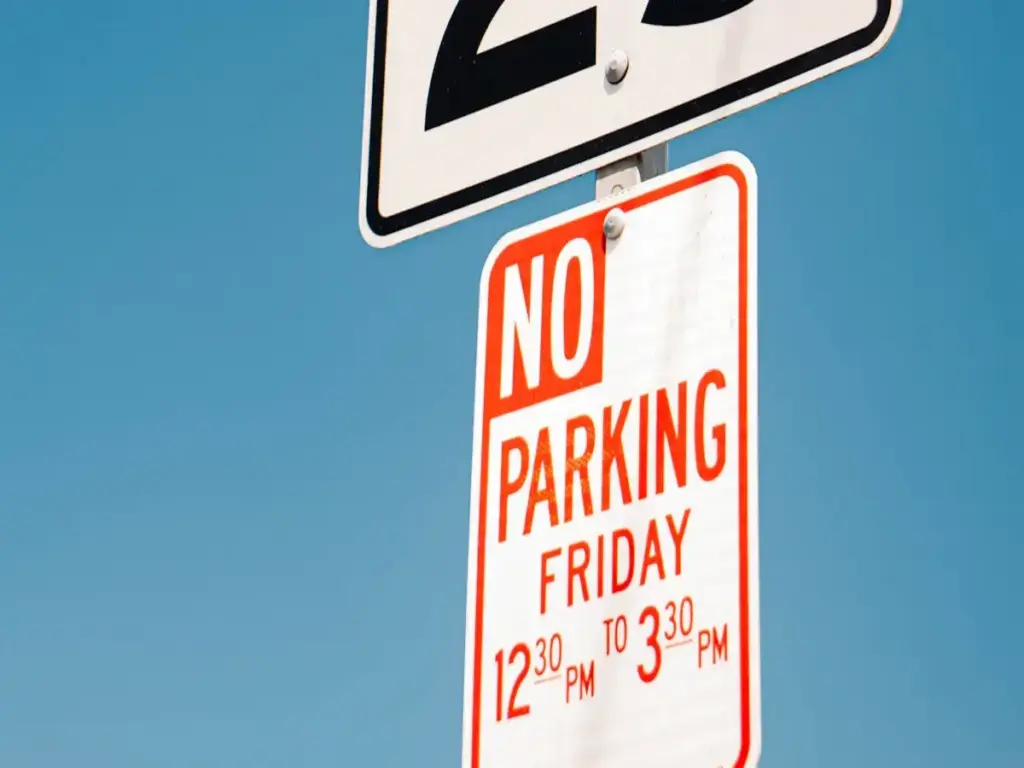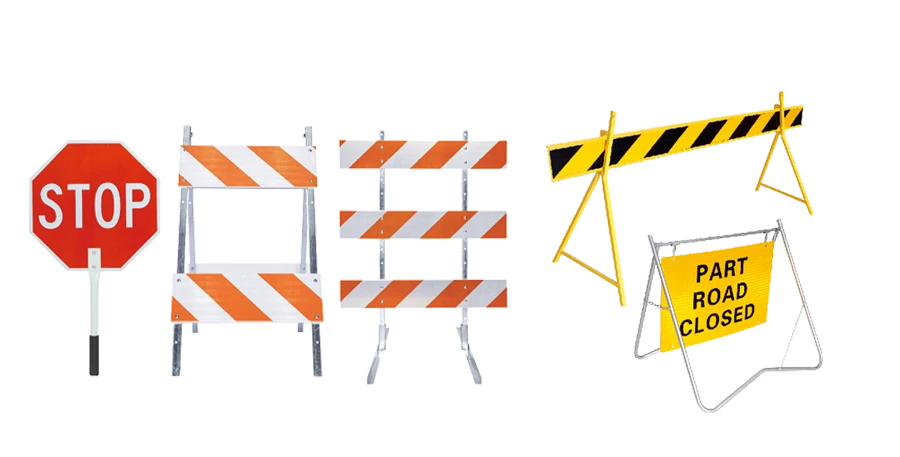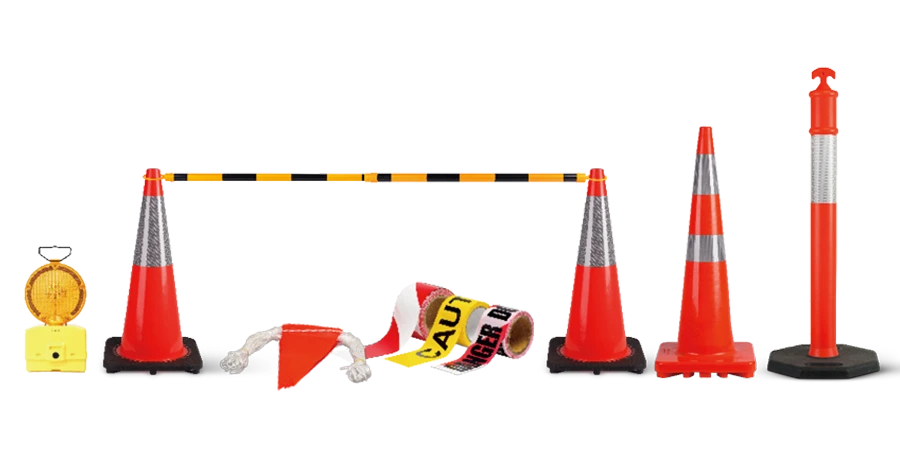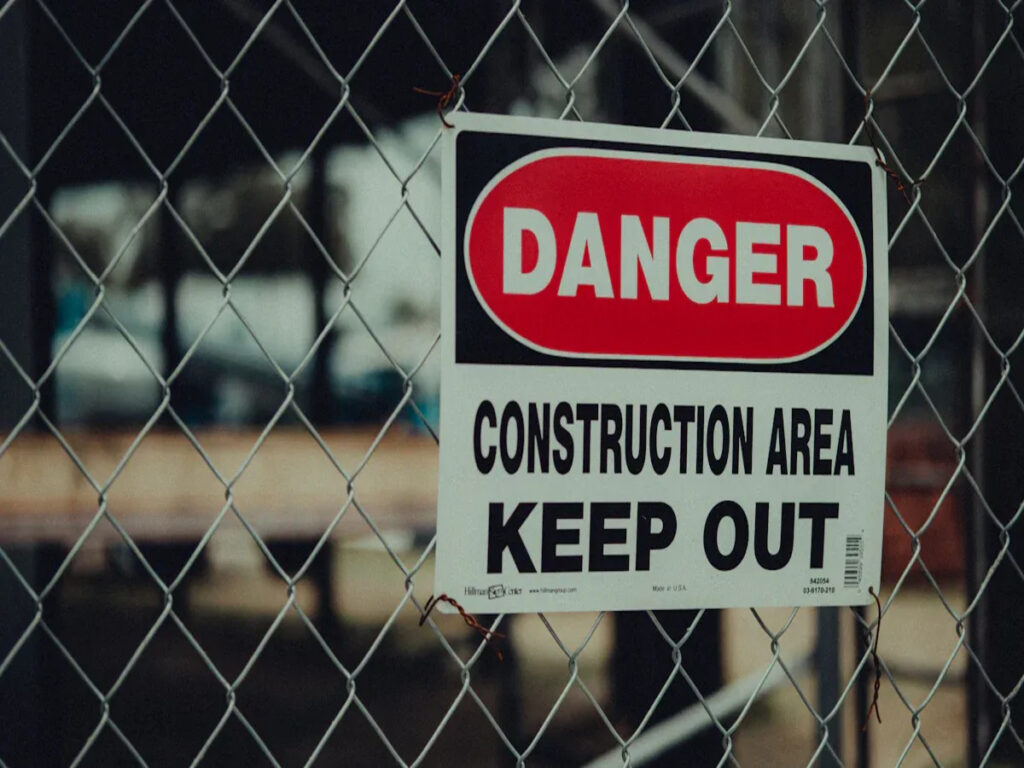
Clear construction safety signs help save lives on every site. You face the fatal four hazards every day. These are falls from heights, being hit by objects, electrocution, and caught-in or between incidents. These construction safety hazards still cause most deaths. This happens even with better construction site safety rules. Look at the statistics below. Falls alone caused 27.82% of deaths from 2003 to 2014.

You must use construction safety signs that follow Australian standards. If not, you could get fines, legal action, or even lose your licence.
At OPTRAFFIC, we provide a range of construction safety signs that fully comply with Australian standards. Our high-quality signs ensure your projects stay compliant, safe, and up to code. Explore our selection today to protect both workers and your business.
The Fatal Four Hazards
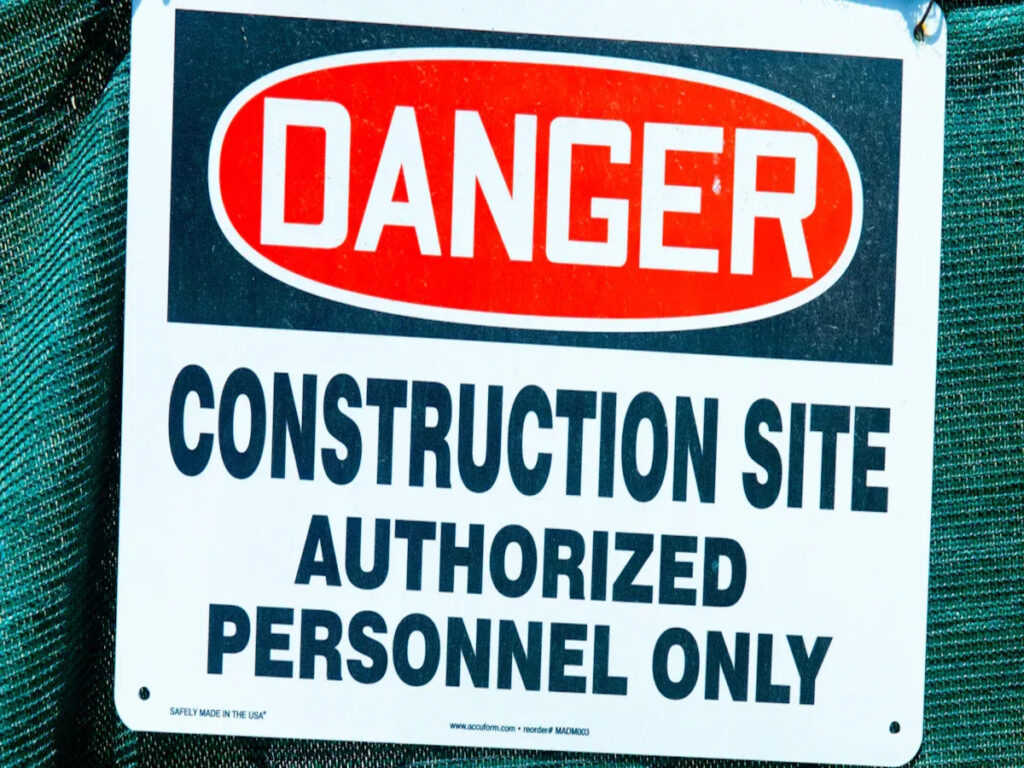
You see the fatal four hazards every day at work. These are falls, struck-by objects, electrocution, and caught-in/between. They cause the most deaths and bad injuries in construction. If you know about each hazard, you can spot dangers and keep your team safe.
Here is a table that explains each hazard and how it affects Australian construction sites:
| Hazard Type | Definition | Specific Impacts on Australian Construction Sites |
|---|---|---|
| Falls | When workers fall from heights or the same level because they slip, trip, or lose balance. | Falls cause almost 20% of deaths at work. They often lead to bad injuries or death. This is worse when working on scaffolds, ladders, or roofs. |
| Struck-by | When workers get hit by moving objects, equipment, or things that fall. | These accidents cause bad injuries and deaths. They happen when there are not enough barriers or site controls. They are common near heavy machines and where materials are moved. |
| Electrocution | When someone gets shocked or burned by electricity, often from live wires or broken equipment. | Electrocution can kill or badly hurt you. It often happens when workers do not have training or PPE. It is a big risk when using power tools and wiring. |
| Caught-in/between | When workers get trapped, crushed, or caught in machines, trenches, or falling structures. | These hazards crush or kill people. They are linked to trench collapses, machines, or buildings falling down. You need shoring and machine guards to stop these accidents. |
Falls
Falls happen if you slip, trip, or lose balance. You might fall from a ladder, scaffold, or roof. Falls can break bones, hurt your head, or kill you. On Australian sites, falls cause almost 20% of deaths at work. You need to spot fall risks and use clear safety signs to warn everyone.
Struck-by Objects
You can get hit by something moving or falling. This could be a vehicle, tool, or crane load. Struck-by accidents often happen near big machines or where things are moved. These accidents can badly hurt or kill you. Struck-by objects are one of the most common fatal four hazards.
Electrocution
Electrocution happens if you touch live wires or broken equipment. You can get shocked or burned. Electrocution can kill or change your life forever. Many accidents happen when workers do not use PPE or follow rules. You must spot electrical dangers and put up clear safety signs.
Caught-in/Between
Caught-in/between hazards trap or crush you. You might get stuck in a machine, between vehicles, or in a trench that falls in. These accidents can crush or kill you. They happen fast and without warning. You must stay alert and follow safety steps to stay safe.
The fatal four hazards are the main reason for deaths and injuries on construction sites. You must watch out for these dangers every day.
- The fatal four hazards cause most deaths in construction each year.
- Focusing on these dangers helps you teach others and train better.
- Good safety plans lower injuries and save lives.
- You follow the law and keep workers safe by dealing with these hazards.
- Spotting dangers and using clear safety signs helps you control the fatal four.
Construction Safety Signs for Falls
Falls are the leading cause of death on construction sites. You must use the right construction safety signs to keep everyone safe. These signs warn you about unprotected edges, scaffolds, and other fall risks. When you see clear signs, you know where to use fall protection and how to avoid danger.
Fall Hazard Signs
You face many fall hazards every day. You might work near open edges, holes, or on scaffolds. Fall hazard signs help you spot these dangers before you get too close. These signs use bold text and simple graphics so you can understand them quickly. You see them on fixed surfaces like walls or barriers, not on moving objects. This makes sure you never miss a warning.
- Danger signs tell you about life-threatening risks, such as falls from heights.
- Warning signs alert you to areas where you must use fall protection.
- Prohibition signs show you where you cannot go without the right protection.
- Mandatory signs remind you to wear harnesses, helmets, or other fall protection gear.
You must always look for these signs before you start work. They help you choose the right fall protection and keep you safe.
Tip: Always check that hazard signs are clean, easy to read, and not blocked by equipment.
Scaffold and Edge Warnings
Scaffolds and unprotected edges are high-risk areas for falls. You need clear safety signs to warn you about these spots. Signs tell you when scaffolds are not safe or when guardrails are missing. They also mark holes or openings that could cause a fall. You see signs at entry points, on barriers, and near ladders.
- Signs show you where to use fall protection, such as harnesses or guardrails.
- Barricades and exclusion zones keep you out of danger zones.
- Edge protection barriers stop you from falling and have signs to control access.
When you follow these signs, you avoid falls and stay safe. You also help your team by pointing out missing or damaged signs.
Visibility and AS 1319 Compliance
You must see safety signs clearly at all times. Signs must follow AS 1319:1994, which sets rules for size, colour, and placement. High-visibility materials, like reflective decals or aluminium, make sure you see signs in low light or bad weather. Signs must be simple, with bold text and clear images.
- Place signs where you can see them from a distance.
- Use durable materials so signs last in tough site conditions.
- Check signs often to make sure they are not faded or damaged.
AS 1319:1994 also says you must use the right type of sign for each hazard. You need prohibition signs for no-entry zones, mandatory signs for fall protection gear, and hazard signs for dangerous edges. When you follow these rules, you protect yourself and your team from falls.
Note: Custom signs can help if your site has special fall protection needs. Always make sure they meet Australian standards.
You play a key role in fall protection. When you pay attention to construction safety signs, you lower the risk of falls and help everyone go home safe.
Safety Signage for Struck-by Hazards
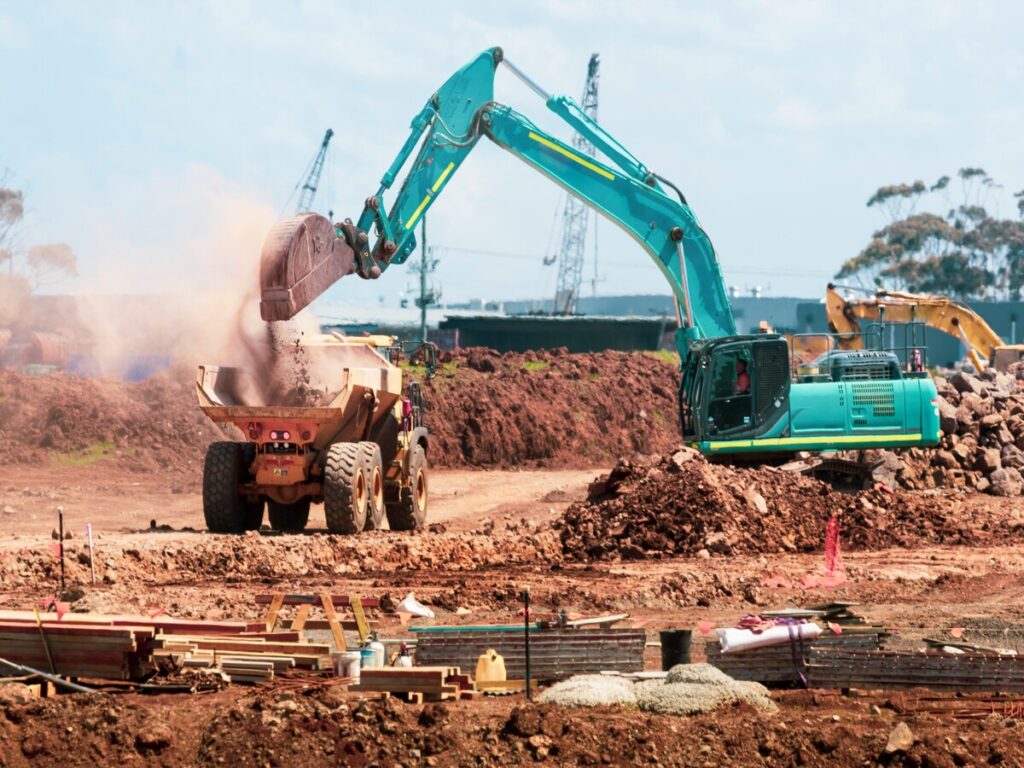
Struck-by hazards are a big risk on every site. You can get hurt by moving vehicles, falling tools, or swinging loads. Many workers get hit each year. These accidents can cause bad injuries or even death. Clear safety signs warn you about these dangers and help stop accidents.
Falling Object Warnings
You often work under scaffolds, cranes, or platforms. Tools and materials might fall without warning. Getting hit from above can hurt your head or worse. Warning signs show where falling objects might be. Put these signs at entry points and under overhead work. Use bright colours and bold symbols so you notice them fast. Always wear your helmet in these places. Signs remind you to stay alert and not stand under loads.
Barricades and Restricted Zones
Barricades and restricted zone signs keep you safe from moving vehicles or equipment. Barriers make a clear line between workers and machines. You see cones, fences, and signs that mark danger zones. Barricades stop you from going into risky areas. Restricted zone signs tell drivers to slow down and guide them safely. These controls help stop confusion and lower the risk of being struck. Nearly half of all work zone deaths happen when vehicles or equipment hit workers. Good barricades and signs make these zones safer for everyone.
Tip: Always follow the signs and never cross a barricade unless you have permission.
AS 1742 and Site Traffic Signs
Australian Standard AS 1742 sets the rules for road and traffic signs on sites. You must use these signs to control traffic and protect workers from being struck. Signs tell drivers where to go, when to stop, and how to avoid work zones. Use stop signs, speed limits, and detour signs to guide vehicles safely. Good traffic plans use both signs and barriers. This keeps you safe from being hit by objects or vehicles. Always check that your site follows AS 1742 for the best protection.
Remember: Safety signs are your first defence against struck hazards. Stay alert and follow every sign you see.
Electrical Safety Signage
Electrical hazards can hurt or kill people on site. You need the right safety signs to stop electrocution. Clear signs help you see danger before you get close. This makes your site much safer.
Electrical Hazard Signs
You find electrical hazard signs in many places on site. These signs warn you about live wires and high voltage. Some areas are only for authorised people. Australian rules say you must use signs that follow AS 1319-1994. You might see signs that say “Danger: Electrical equipment: authorised personnel only” or “Danger: High voltage within — keep out.” These signs use strong colours like red, black, and white. They often show a lightning bolt symbol. The words tell you about the risk and who can go in. Put these signs where everyone can see them from far away. Signs must stay clear and easy to read, even in bad weather. If you follow these rules, you help stop electrocution and keep your site safe.
Tip: Always look for electrical hazard signs before you start work in a new area.
Lockout/Tagout Notices
Lockout/tagout notices help stop electrocution. These notices tell you when equipment is being fixed and must stay off. The lockout system uses a lock to keep power off. The tagout part adds a warning label. This tells everyone not to touch the equipment. Only authorised workers can take off these locks and tags. This system stops accidents that can hurt or kill people. Always follow lockout/tagout notices. They keep you and your mates safe from hidden dangers.
- Lockout/tagout keeps equipment safe when it is being fixed.
- Notices remind you to stay away from live parts.
- Following these signs lowers the risk of electrocution.
AS/NZS 3000 Compliance
You must follow the AS/NZS 3000:2018 standard, called the Wiring Rules. This standard tells you how to install and label electrical systems safely. It says where to put signs and how to make them clear. If you follow these rules, you help stop electrocution and meet the law. Check your safety signs often to keep them up to date and working well. When you use the right signs and follow the rules, you make the site safer for everyone.
Remember: Good safety signs and clear rules save lives. Always look for signs and do what they say.
Preventing Caught-in/Between Incidents
Caught-in/between incidents can happen very fast on site. You might get trapped in machines or between heavy equipment. Sometimes, a trench can fall in and trap you. These accidents can crush you or stop you from getting out. You need strong steps to keep everyone safe.
Machinery Safety Signs
There are many machines on a construction site. Each machine can be dangerous if you are not careful. Machinery safety signs warn you about moving parts and pinch points. These signs show where you could get caught. Danger signs tell you to stay away when machines are working. Always look for these signs before you start your job. They remind you to keep away from moving equipment. If a sign is missing or broken, tell someone right away.
Clearance and Danger Zones
Clearance zones are safe spaces around machines. You must stay outside these zones to avoid getting trapped. Danger zones show where you could get stuck between things. Safety signs help you see these places quickly. You might see painted lines, cones, or warning boards. These things help keep you out of danger. Never go into a danger zone unless you have permission and the machine is off. If you see someone in a danger zone, warn them straight away.
Tip: Always look for new signs or barriers when things change on site. This helps keep everyone safe and paying attention.
WorkSafe Machinery Guidelines
WorkSafe Australia gives rules for using machines safely. These rules help stop caught injuries. You must follow lockout steps before fixing or cleaning machines. Guards and shields keep you safe from moving parts. Safety signs show you where you could get caught. Training teaches you how to avoid these dangers. You help keep everyone safe every day. Stay alert, follow the signs, and help your mates avoid getting caught.
Best Practices for Construction Site Safety Signage
Sign Placement and Visibility
You must place construction safety signs where everyone can see them. Good placement helps you spot hazards like falls, struck-by dangers, electrocution, and caught-in/between risks before accidents happen. If you want your safety measures to work, you need to follow these steps:
- Mount signs at eye level in busy areas. This makes sure you notice them as you walk or drive past.
- Keep signs clear of trees, poles, and equipment. Obstructions can hide warnings about falls or caught hazards.
- Use high-contrast colours and large, simple fonts. This helps you read signs quickly, even from a distance.
- Choose reflective materials or add lighting for signs in dark or low-light areas. Night work or bad weather should never hide a warning about falls or struck-by risks.
- Secure signs with heavy bases or sandbags. Wind or moving vehicles should not knock them over.
- Group similar messages together. Too many unrelated signs can confuse you and weaken prevention strategies.
- Remove old or damaged signs right away. Outdated messages can cause mistakes and put you at risk of falls or being struck.
- Use multilingual signs if your team speaks different languages. Everyone must understand the safety strategies in place.
Tip: Treat sign placement as a key part of your safety strategies, not just a rule to follow.
You must check that signs are always visible and easy to read. Clean them often and replace any that fade or break. Good visibility supports prevention and helps you act fast if you see a hazard.
Regular Audits and Training
You need regular audits to keep your construction safety signs effective. Hazards change as work moves forward. Falls, struck-by, electrocution, and caught-in/between risks can appear in new places. You must update signs to match these changes.
- Inspect signs every time you visit the site. Look for blocked, missing, or damaged signs.
- Site managers should do a formal check at least once a week. Health and safety staff should review signs every month.
- Update signs when you change work areas, bring in new machines, or start new tasks. This keeps your prevention strategies strong.
Training is just as important as audits. You must know what each sign means and how to respond. Good training covers:
- How to spot signs for falls, struck-by, electrocution, and caught-in/between hazards.
- What actions to take when you see a warning, prohibition, or mandatory sign.
- How to use fall protection and other safety measures when signs tell you to.
- How to report missing or unclear signs.
Many sites use interactive training, like slide shows or digital checklists. These tools help you learn faster and remember what to do. Safety training should happen often, not just once. Regular briefings keep you alert to new hazards and reinforce prevention strategies.
Note: A strong safety culture starts with you. When you understand signs and follow safety measures, you help prevent falls, struck-by, and caught accidents.
Smart Signage and Technology
Smart signage is changing how you stay safe on site. Digital traffic signs can show real-time hazard alerts. If a sensor detects a risk, like a machine moving or a trench collapse, the sign updates instantly. This helps you avoid falls, struck-by, or caught-in/between dangers before they happen.
- Smart signs use bright colours, flashing lights, and clear symbols. You see warnings right away, even in noisy or busy areas.
- Some systems use sensors to trigger alerts. For example, if someone gets too close to a dangerous edge, the sign flashes a warning about falls.
- Digital signs can give different messages in different zones. If a hazard moves, the sign changes to match the new risk.
- Cloud-based systems let managers update signs from anywhere. This keeps your prevention strategies up to date, even on large or complex sites.
Research shows that smart signage helps people react faster in emergencies. During drills, digital signs helped workers evacuate more quickly than audio alarms alone. On construction sites, this speed can save lives by stopping falls, struck-by, or caught accidents.
Callout: Smart signage is not just for emergencies. It can guide you away from blocked paths, warn you about live wires, or remind you to use fall protection.
You should look for ways to add smart signage to your site. It supports your safety measures and makes prevention more effective. As technology improves, you will see even more ways to use digital tools for safety.
Clear and legal construction safety signs help you stop the fatal four risks. They also help save lives on site. You must check and update signs often. This keeps them easy to see and working well. Doing this lowers fatal four accidents and helps everyone work better. Always look for broken signs and fix your safety rules to make things safer.
New tools like smart wearables and digital alerts help you spot fatal four dangers quickly.
Look at different safety sign products and services. This helps your site follow Australian rules and keeps everyone safe from the fatal four.
| Service Category | Description |
|---|---|
| Safety Signage | Legal signs for fatal four dangers and site needs |
| Maintenance | Regular checks for clear signs and following rules |
| Site Audits | Checks to make sure rules are met and fatal four risks are lower |
FAQ
What are the Fatal Four hazards in construction?
You face four main dangers on site: falls, struck-by objects, electrocution, and caught-in/between accidents. These hazards cause most deaths and serious injuries in construction. You must know them to stay safe.
Why do you need safety signs on a construction site?
Safety signs warn you about dangers before you get close. They help you avoid accidents and follow site rules. Clear signs keep you and your team safe from the Fatal Four hazards every day.
How often should you check and update safety signs?
You should check signs every week. Update them when site conditions change or when you start new tasks. Regular checks keep signs clear and easy to read.
Tip: Report any damaged or missing signs straight away.
What standards must your safety signs follow in Australia?
Your signs must follow AS 1319:1994 for general safety and AS/NZS 3000:2018 for electrical safety. Traffic signs should meet AS 1742. These standards make sure your signs are legal and effective.
Can you use digital or smart safety signs on site?
Yes, you can use digital or smart signs. These signs give real-time alerts and update quickly when hazards change. Smart signs help you react faster and improve site safety.

